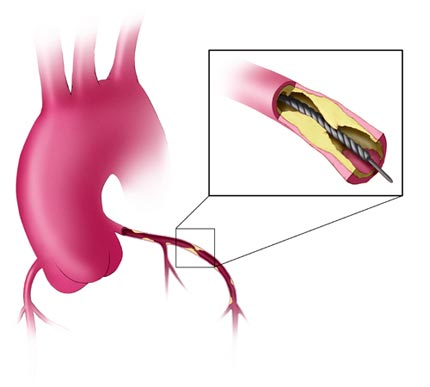Angioplasty & Vascular stenting

Angioplasty and Vascular Stenting
Angioplasty uses a balloon-tipped catheter to open a blocked blood vessel and improve blood flow. The doctor uses medical imaging, typically live x-rays, to guide the catheter across the blockage. Once the balloon spans the blockage, it is inflated to open the blocked vessel and improve blood flow. It may be done with or without a metal mesh tube called a stent. If a stent is used, it will be left inside the blood vessel to help keep it open.
What are Angioplasty and Vascular Stenting?
Angioplasty, with or without vascular stenting, is a minimally invasive procedure. It is used to improve blood flow when a vein or artery is too narrow or blocked. It is done in our Hybrid cathlab.
In angioplasty, x-ray fluoroscopy or other imaging is used to guide a balloon-tipped catheter (a long, thin plastic tube) into an artery or vein to where it is narrowed or blocked. The balloon is inflated to open the vessel, then deflated and removed.
A metal mesh tube called a stent may be permanently placed in the newly opened vessel to help keep it open. There are different types of stents, including wire mesh. Stents covered in fabric-type material are called stent grafts.
Risks
- Major complications after angioplasty are rare. However, inserting the catheter may injure the artery. There is also a very small risk of blood clots or tearing the artery.
- When angioplasty is done alone, blockages can recur. Most of these arteries can be opened again successfully. This can also occur when a stent is placed in the artery at the time of the angioplasty.
- Heavy bleeding from the catheter insertion site may require special medication or a blood transfusion.
- There is a risk of stroke when angioplasty and/or stenting are performed on the carotid artery.
- A rare complication associated with angioplasty is abrupt vessel closure. This blockage in the treated area typically occurs within 24 hours of the procedure. If it happens, medication to dissolve clots followed by angioplasty or stenting may be used. In some cases, emergency bypass surgery may be needed.
- Other rare complications include heart attack and sudden cardiac death.
- Any procedure where the skin is penetrated carries a risk of infection.
- There is a very slight risk of an allergic reaction if the procedure uses an injection of contrast material.
- Any procedure that places a catheter inside a blood vessel carries certain risks. These risks include damage to the blood vessel, bruising or bleeding at the puncture site, and infection. The doctor will take precautions to mitigate these risks.
- Contrast material may cause a decrease in kidney function, particularly if it already exists. Your doctor will check your kidney function before the procedure in order to lower this risk. .


